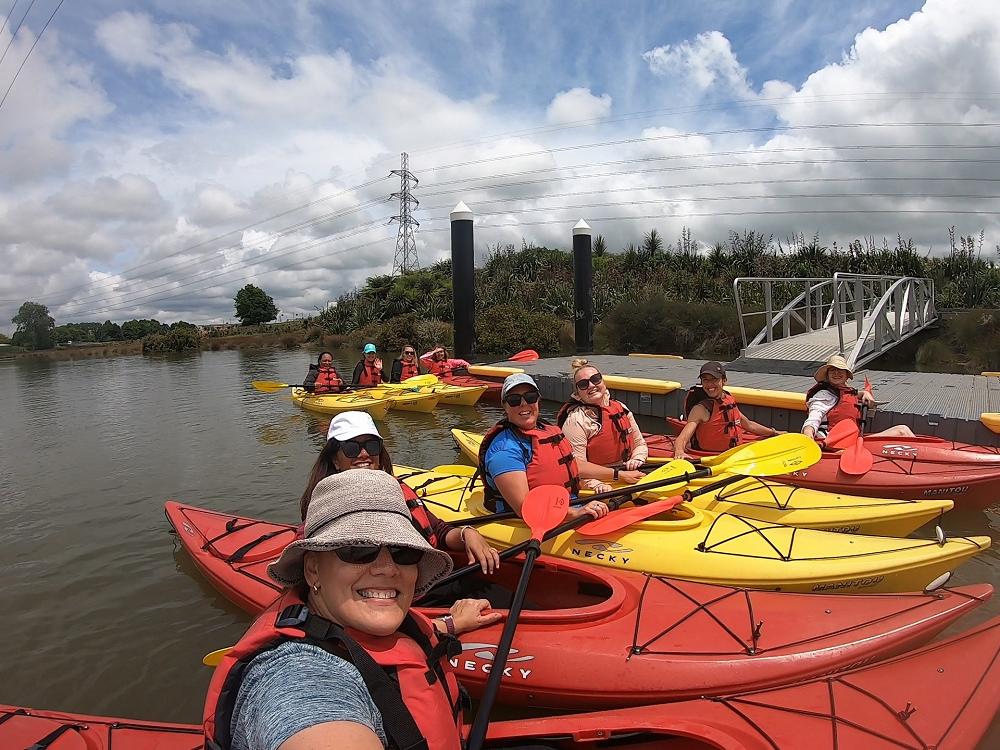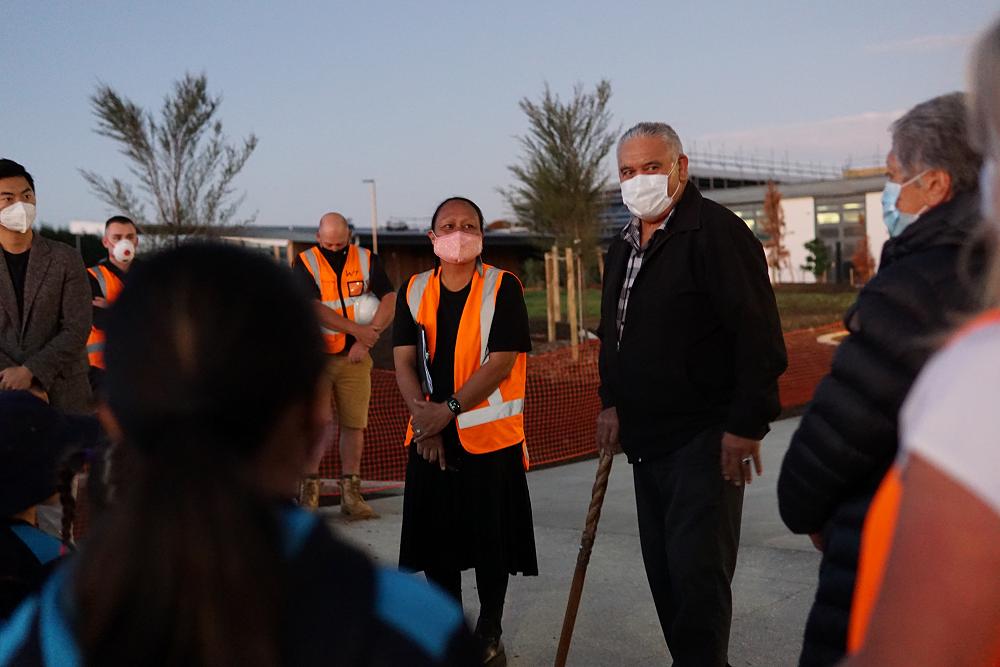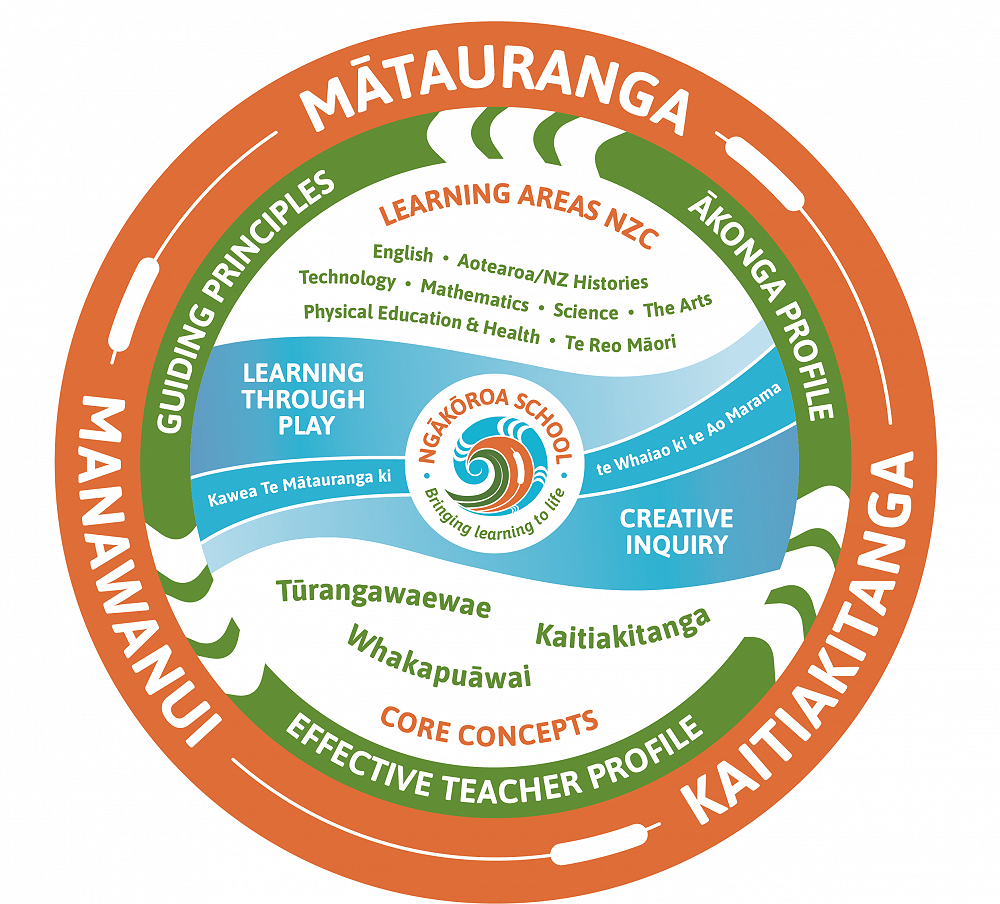
'Bringing Learning to Life'
Lisa Cavanagh | Foundation principal | Ngākōroa School
Lisa Cavanagh is the Foundation Principal of Ngākōroa School in Drury West, one of the fastest growing areas of Auckland. In what she describes as “a perfect storm of delays”, the physical build of the school is one year behind schedule. As a result, the school opened in January this year in a 100 year old school site that had been vacated the previous year by Paerata School, when their school was rebuilt in a neighouring new development.
In the interim, 11kms from their future site, the “Ngākōroa Country Campus” has welcomed its foundational whānau and tamariki.
Meeting Lisa, one is immediately struck by her passion and commitment to her mahi and the exciting opportunity of establishing a new school for this new community. I asked her to share a little of her journey and learnings to date. In particualar about establishing relationships with mana whenua and the impact that working alongside them has had on the formation of the school and its vision for learning.
Thanks for sharing with us, Lisa. Can you tell us a bit about yourself?
Ko Te Aroha te maunga te rū nei taku ngākau,
Ko Waihou te awa e mahea nei aku māharahara,
Nō Ireland ōku tipuna,
I tae mai ōku tipuna ki Aotearoa i te tau 1860s,
Ko Ashby rāua ko O’Keefe ōku whanau,
I whanau ai au ki Kirikiriroa,
I tipu ake au ki Onepoto,
E noho ana au ki Waiuku,
He tumuaki ahau ki te kura o Ngākōroa,
Ko Lisa Cavanagh toku ingoa.
I have been in education for 25+ years, and while I grew up in Auckland and spent my first ten years teaching here, we have spent the last 20 years living in different spots around the North Island. Most recently I have had the privilege of leading two schools in Wellington's Hutt Valley. Covid in 2020 encouraged Carl and I to make the decision that it was once again time to move closer to our extended families... and so here we are back in Auckland!
What drives me as an educator are a set of fundamental beliefs I have about learning, that I intend to bring to life at Ngākōroa School. These are:
- Learning should be authentic, challenging and fun;
- Every child should be supported to follow their own personalised learning pathway;
- Schools play an important role in fostering a strong sense of personal identity and belonging;
- Learning is a partnership between home, school and the wider community.
Can you tell us a little about the community and environment where the school is being established?
Ngākōroa School is situated in the Auranga community in Drury West. The whole development is the brainchild of Charles Ma, who was intent on bringing back a sense of relationship to the places we live, based on principles of connection and community. The development team have invested significantly in terms of both time and people to make this a reality, in this community.https://auranga.co.nz/

This area is one of the fastest growing areas in Auckland, and over a five year period has transformed from lifestyle blocks and market gardens into a high density suburb, with growing infrastructure. A new town centre has just been approved in very close proximity to the school site. Future growth and building developments within our zone will be a feature of the first 5 - 10 years of our school's existence.
Tell us about the process you are undergoing as an Establishment Board and new staff to develop a vision for learning and bring it to life in the operation of the school.
The partnership we are nurturing with Ngāti Tamaoho, as mana whenua, has been the starting point for developing a shared vision and cultural narrative that accompanies our school name.
The school name and cultural narrative sparked the idea of "bringing learning to life". The awa we are named after, was once colloquially known as ‘the life-giver’. The Board subcommittee reviewed and refined the ideas of the school vision, while continuing to engage with Ngāti Tamaoho, to ensure their intent was reflected in our interpretations.

While this work was happening we also visited early childhood education sites and the local high schools to gather the voice of tamariki and rangatahi, to inform our mahi. We did regular drop-ins at the local cafe and hosted events for the benefit of the community.


Once we had a draft vision and values document, we shared and invited feedback from the wider community via a survey and conversations at local community events.
With the intermittent lockdowns and ongoing Covid restrictions during this time, our digital presence (a temporary website and social media) was a vital way to share and invite wide ranging feedback. Covid added additional challenges, particularly when we were bringing our teachers on board and beginning to make more personalised connections with individual whānau. The important face to face interactions that underpin early relationship building mahi has been heavily impacted. We have had to be creative in working both in the original alert levels and the traffic light system, to build relationships, share hopes and dreams in very personalised ways. Early connections were forged via zoom, or through outdoor events with restricted numbers.
A number of family fun events, such as games' afternoons, an amazing race and wheels' days were all held before our school opened. This helped teachers to meet and interact with tamariki and their whānau in casual, yet meaningful ways.
How has this relationship with mana whenua assisted you in ensuring a bicultural and inclusive approach to establishing a new school?
With the name and cultural narrative as central to all our decisions, our bicultural heritage is reflected at every level of our kura, beyond our vision and values, to include the guiding principles and as central contexts within our local curriculum.
In terms of physical spaces, local histories and stories are told in the design of the buildings and the site itself:
- Our logo, designed by a mana whenua artist, is based on the narrative, vision, values and guiding principles determined early on.
- Spandrel designs telling the story of the taniwha who live in our river.
- A hinaki net is prominent as the main piece of playground equipment.
- Carved stone at the entrance acts as kaitiaki and tells stories of the tipuna.
- A cobblestone design at the entrance way tells the story of our awa and the coming together of people.
- Mara hupara and nature play areas a have been designed with the support of mana whenua.

Your relationship with mana whenua is clearly valued by you and your Board. For some schools establishing these partnerships can feel difficult. What advice or learning can you offer schools to support them in forging these vital relationships?
Ngāti Tamaoho are incredibly active as a group, and with the introduction of the Aotearoa New Zealand Histories curriculum they have been busier than ever in the education space. Sometimes it can be hard to ‘pin them down’ in the time frames that we have wanted. We have had to learn to be patient, be persistent, but most of all to make our conversations more about how WE can give back to them, by reflecting their hopes and dreams for future ākonga in what we do on an everyday basis. At the crux of it, this is a two-way relationship and should be about more than what Ngāti Tamaoho can do for us.
Some of the things we have done to support this engagement include:
- Making our gifted name and cultural narrative the foundation of our vision, values and local curriculum.
- Investing time in the relationship; taking an interest in the work the iwi do outside of the education space.
- Initially co-opting a representative to the eBOT.
- Towards the end of our establishment year we wrote a ‘Mana Enhancing Agreement’ (memorandum of understanding) between Ngāti Tamaoho and our Establishment Board to reflect the commitment we have with each other, to Te Tiriti, and to ensuring the continuity of our work together into the future.
- Ensuring our documents are bilingual and receiving help with translating elements of our prospectus in appropriate ways.
- Engaging mana whenua artists in design work as paid experts, not ‘koha’ or on a voluntary basis; e.g. logo, values icons, spandrel designs on teaching and learning spaces and the playground design.
- Laying of the Mauri Stone under the main administration building and entranceway.
- Carving of an entrance stone to be kaitiaki of our kura.
- Commitment to Māori language provision at level 4b for ALL our tamariki.
- Involvement in the development of the Ngāti Tamaoho education strategy, and workshops with mana whenua to support this.
- Engaging Ngāti Tamaoho experts for professional learning development (PLD) where relevant, for example, Mana Potential instead of PB4L.
- Support in developing day-to-day kawa relevant to the area; karakia, waiata, pepeha, powhiri and making a commitment to embedding these in the kaupapa of our school.
- Blessing at Country Campus guided by local kaupapa.
- Lobbying the Ministry of Education to support the above work by providing additional funding for iwi liaison.
- In the coming year, all staff have committed to te reo Māori learning at a level appropriate to them.
- PLD with staff to follow through with Ngāti Tamaoho Education Strategy, actively working towards achieving the various pou in the strategy.
- Learning about local stories and tipuna, using these as the foundation of our learner profile.
- Visit marae and sites of interest in the area with tamariki, whanau &and eBOT.
- Continued connection with staff at Ngāti Tamaoho,
drop-ins, and invitations to be involved with our mahi.
For me the greatest learning from all of this mahi is to be a learner. That is to be open to being guided by kaumatua, to deeply understand the intent, history and purpose of tikanga and kawa within Te Ao Māori, then being prepared to rethink, divert, pivot and change our plans to suit new knowledge and understandings.
What are your thoughts regarding how you might localise your vision for learning in your curriculum, pedagogy and learning design?
Curriculum was the one thing we were not prepared to leave to chance. We prioritised this and building a strong staff culture, over all else, through terms 3 and 4 of our establishment year.
Successful PLD application enabled us to engage Laurayne Tafa and Mark Osborne, who have complimented each other in their work with our team around relationships based learning pedagogical approaches and local curriculum design.
Our local curriculum design is strongly influenced through our ongoing work with Ngāti Tamaoho, and the pedagogical approaches we want to emphaise are evidence based practices informed by Russel Bishop’s research in the Te Kotahitanga project.

An upside of the delays to the property project, and subsequent delays in resourcing signage and many of the other time consuming jobs done in the establishment year, was that we have had more time to pull together our guiding principles, pedagogical approaches and a local curriculum that we feel is responsive, cohesive, and connected to the needs of our community.
Our challenge now is to make it a reality!
You have just completed your first term open at your temporary country campus. What has been on top at this time?
COVID! And, the constant change that comes with it! The ongoing, rolling absences of staff and students makes it tricky to get a sense of continuity going.
Working with the team to ‘put our money where our mouth is’ in terms of the pedagogies and the local curriculum, that we have so far only worked with ‘in theory’.
Keeping connections going when we are distant from our community. Building a sense of belonging for ākonga, as well as relationships grounded in trust for whānau. Building trust through transparency, integrity and professionalism is even more important when we are so distant - geographically as well as due to Covid restrictions.
And reflecting back and thinking ahead, what do you see as being the key milestones and touchpoints for your establishment journey?
Looking back:
Clarity of the vision and values, inspired by our name and cultural narrative, gave us our touchstone to connect EVERYTHING else back to our values, guiding principles, local curriculum content, and recruitment decisions.
Recruitment - we recruited for character, a growth mindset and a fit to vision and values… “no d**kheads” was a catchphrase, as was the idea of recruiting a star team, not a team of stars.
Time away with our deputy principals - discussions we had while travelingng, often prompted by what we had seen in schools, is where the real shape of our curriculum and our identity as a lead team has come from.
Time in term 4 with teachers was critical for establishing the culture and pedagogies that we want.
Looking forward:
Getting onsite - the importance of relationships with whānau for teachers. So far this has been challenging, when teachers have no access to parents due to our need to bus all our children to our temporary site outside of our local community. We are actively working on thinking creatively in this space, but it is a work in progress for us.
Moving on to our permanent site will be huge. We have the gift of time in the Country Campus (temporary site) to explore/experiment/trial, and to learn more about each other before we are put ‘on shop’ in the new facilities for all to see.
Thanks, Lisa, for your honest sharing and wisdom!
